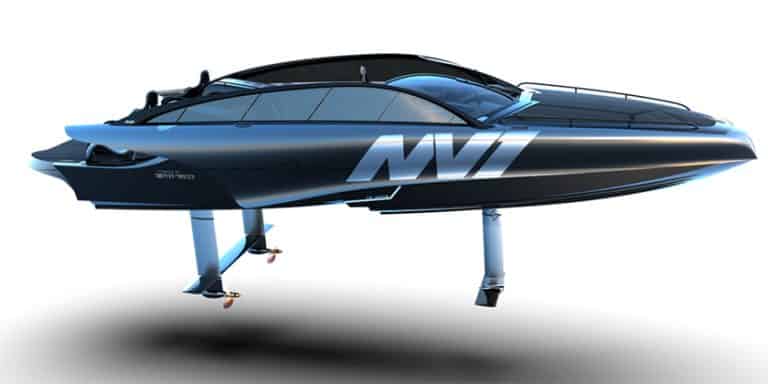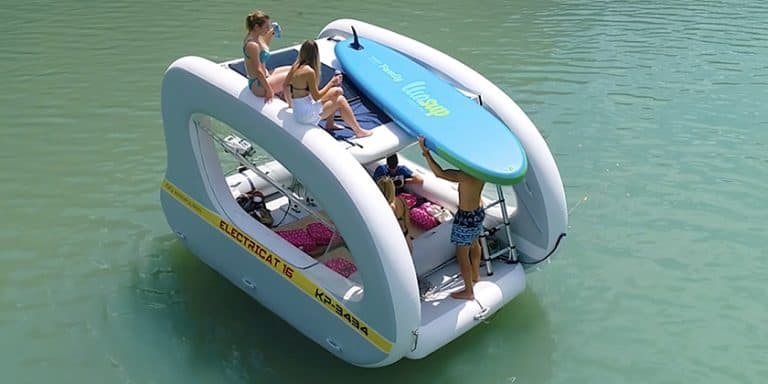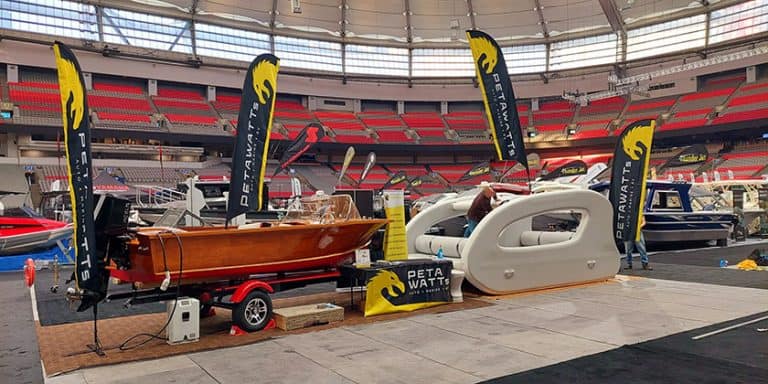Plugboats: Why Are These Electric Boat Builders in The Middle Of The Desert At The Las Vegas Consumer Electronics Show?

Navier 30
The Consumer Electronics Show (CES) in Las Vegas is best known as the annual geekfest where the latest in computers, software, home entertainment, video games and other electronic gadgets are on display.
This year though, CES welcomed and showcased new and emerging electric boat manufacturers like Candela, Navier and Blue Innovations Group…as well as more established marine companies like Mercury and Volvo Penta. What gives?
The simple answer is that, because the propulsion of electric boats is achieved through the flow of electrons rather than the explosion of fuel, things like energy consumption diagnostics, autonomous operation, and wireless over-the-air updates and repairs are integral extensions of the electric operating system, not add-ons.
Mikael Mahlberg, Marketing Director of Sweden’s Candela, puts it best, speaking about their revolutionary Candela 8 electric hydrofoiler, which has now sold over 150 units since its introduction last February and has a target of 400 this year. “On the outside, it is a carbon fibre skin in the shape of a boat,” says Mahlberg. “But inside, it is an extremely sophisticated robot that performs a series of actions automatically to ensure a smooth flight in all conditions.”
In fact, ‘boat builders’ were some of the last people to join the original Candela team. The essential elements – the brains of the flying boat – were created by software developers and experts with backgrounds in things like flight control electronics and dynamic modelling technology.
CNET’s Bridget Carey says riding in the C-8 “feels like you’re floating on a magic carpet above the water.” It’s not magic, though, but the result of the seamless interaction of the motor and hull with a core processor that captures the movements from 7 sensors and uses advanced algorithms to adjust the height, roll and pitch of the underwater foils about 100 times per second.
Fellow CES exhibitor Navier is a hydrofoiling electric boat company from the USA, which is backed in part by Sergey Brin of Google fame and was founded by roboticist Sampriti Bhattacharyya, an aerospace engineer who did her PhD work at MIT on an autonomous underwater research vessel.
Not surprisingly, the focus of the Navier exhibit at CES was on the self-docking capabilities of its flagship vessel which they call ‘The boat of the Future’ – the Navier 30.
As Bhattacharyya told ABC News: “Most recreational boaters enjoy driving a boat but what’s been most requested in terms of autonomy is auto-docking. Docking can be pretty overwhelming, especially if you’re a beginner. The big picture is that the Navier N30 is really a technology platform where we are perfecting our hydrofoil control and autonomy technology.”
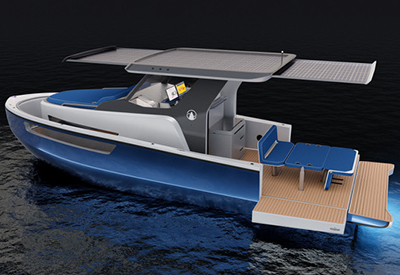 Blue Innovations R30
Blue Innovations R30
Blue Innovations Group – BIG – is an e-boat startup created by John Vo, former Head of Global Manufacturing for Tesla. Again, his education and degrees are not in the automotive or mobility industry, but in aerospace, chemical engineering, semiconductors and solar cell technology. All of that knowledge was invaluable to his role at Tesla and he is now bringing it to water transportation.
“It’s all about energy,” he says. “The world we live in is all about how you produce it, how you use it, and how you transfer it – in this case from electrical to mechanical energy.”
BIG started taking reservations on the first day of CES for their R30 electric boat with solar auxiliary charging. For him, it is a better venue than a boat show, where many people are focussed on what they are going to be riding in this summer rather than researching the capabilities of new technology.
Then there are the well established marine companies like Mercury and Volvo Penta, who also see great value in being at CES.
Mercury introduced a demo/prototype of their first venture into electric outboards at the Miami Boat Show last year, but decided to launch the actual motor – the Avator 7.5 – here in Las Vegas.
CES is an important venue to show how we are challenging current thinking, how we challenge ourselves and to spark a dialogue with consumers and technical experts outside the marine world.”
In the end, that may be the most important reason that both these electric boat builders and the established companies that are getting into electric propulsion decide to strut their stuff at CES.
As with electricity itself, it’s all about connections, and CES bills itself as “the most influential tech event in the world, where the world’s biggest brands do business…and meet new partners”.
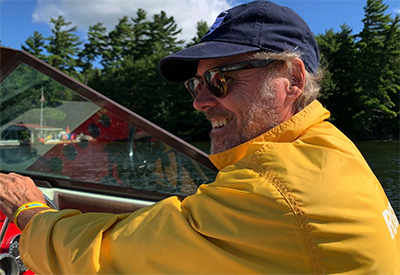 Jeff Butler is based in Toronto and is the Editor/Publisher of plugboats.com, the international website covering everything electric boats and boating. He is also President of the Electric Boat Association of Canada and is busy preparing to bring electric motor boat racing and exhibitions to Toronto Harbour in 2023 for the first Toronto Solar Boat Races.
Jeff Butler is based in Toronto and is the Editor/Publisher of plugboats.com, the international website covering everything electric boats and boating. He is also President of the Electric Boat Association of Canada and is busy preparing to bring electric motor boat racing and exhibitions to Toronto Harbour in 2023 for the first Toronto Solar Boat Races.


